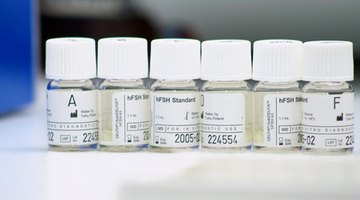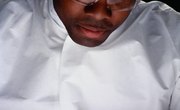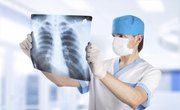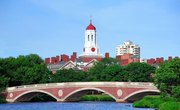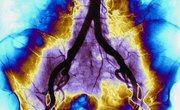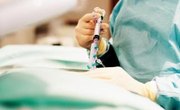U.S. News and World Report regularly ranks medical research schools in the U.S. Rankings depend on factors such as assessments by peers and residency directors and average research activity per faculty member. Research activity measurements are based on the total amount of funding awarded through grants from the National Institutes of Health. According to Arizona State University, such rankings wield power because a highly productive research faculty leads to more intellectual cachet and thus more research funding.
Harvard University Medical School
Harvard University Medical School ranked first on the U.S. News and World Report's list of the best medical research schools. In fiscal year 2009, Harvard received more than $227 million in research and training funds. As of January, 2011, the school has more than 11,000 faculty members, 705 M.D. students, 147 D.M.D. students and 556 Ph.D. students. The school's 10 departments include biological chemistry and molecular pharmacology, cell biology, genetics, global health and social medicine, and pathology. Harvard Medical School is affiliated with 17 hospitals and research institutions, such as Children's Hospital Boston, Joslin Diabetes Center and Schepens Eye Research Institute.
University of Pennsylvania School of Medicine
The University of Pennsylvania School of Medicine ranked second on the list. In 2007, the school received $405 million in research grants from the National Institutes of Health. Founded in 1765, the school has 1,700 full-time faculty, 725 medical students and 850 postdoctoral fellows. The school is affiliated with the Abramson Cancer Center, the Penn Cardiovascular Institute, the Penn Comprehensive Neuroscience Center and the Hospital of the University of Pennsylvania. Research includes projects in areas such as resuscitation science, cholesterol and heart disease, breast-cancer treatment and anti-smoking drugs.
Johns Hopkins University School of Medicine
The Johns Hopkins University School of Medicine ranked third among medical research universities. In 2009, the school received $435 million in federal research support. The Johns Hopkins University School of Medicine has 2,448 full-time faculty, 482 medical students and operates four academic and community hospitals, 25 outpatient sites and four surgery centers that together serve more than 1.5 million patients each year. The school is affiliated with the Wilmer Eye Institute, the Institute of Genetic Medicine, the Institute for Cell Engineering, and the Welch Center for Prevention, Epidemiology and Clinical Research.
University of California San Francisco School of Medicine
The University of California-San Francisco School of Medicine came in fourth on the list. The school received $494 million in funding and 1,097 grants from the National Institutes of Health in 2010. The school has 1,935 full-time faculty, 618 M.D. students and 612 M.S. and Ph.D. students at nine sites in San Francisco and Fresno. Affiliated hospitals and training centers include the San Francisco General Hospital, the Langley Porter Psychiatric Institute, the Fresno Medical Education Program and the UCSF Medical Center.
Related Articles
References
Writer Bio
Based in the Southwest, Linsay Evans writes about a range of topics, from parenting to gardening, nutrition to fitness, marketing to travel. Evans holds a Master of Library and Information Science and a Master of Arts in anthropology.

